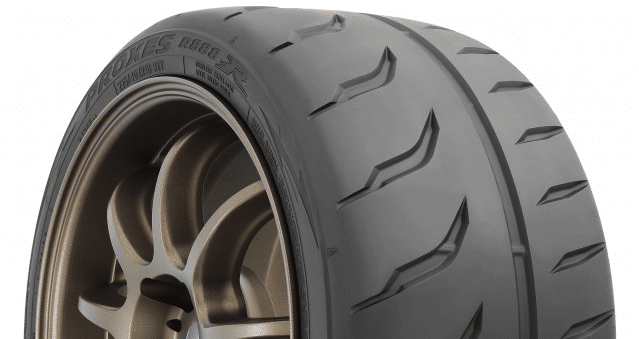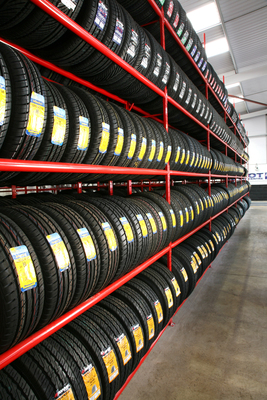All Categories
Featured
Table of Contents
I had the ability to get 100 hours out of one of these tires, and while it had absolutely no tire lugs left on it, the soft compound made it work very wellas long as I was utilizing a soft mousse. Kitt Stringer photo Easy placing - 3Wear - 3Sidewall stamina - 3Performance on origins - 4Performance on wet rocks - 2Traction on dust - 5Cornering ability - 4Traction while stopping - 4Self-clearing of dust and mud - 3Performance in mud - 3Overall predictability or monitoring - 3 _ 37 Verdict: This is a good well-rounded tire with excellent value for money.

The wear corresponded and I like the length of time it lasted and how constant the feel was throughout use. This would certainly likewise be a great tire for faster races as the lug size and spacing bit in well on rapid terrain. Kitt Stringer image Easy mounting - 3Wear - 3Sidewall strength - 3Performance on origins - 4Performance on wet rocks - 4Traction on dust - 4Cornering ability - 4Traction while stopping - 5Self-clearing of dirt and mud - 4Performance in mud - 4Overall predictability or monitoring - 4_42 Conclusion: I liked this tire a lot.
If I had to purchase a tire for hard enduro, this would certainly be in my top option. Easy placing - 3Wear - 3Sidewall stamina - 3Performance on roots - 4Performance on damp rocks - 3Traction on dirt - 4Cornering capability - 3Traction while braking - 3Self-clearing of dirt and mud - 4Performance in mud - 4Overall predictability or tracking - 3 _ 34 Final thought: This tire was very soft and flexible.
All the gummy tires I checked performed relatively close for the first 10 hours or so, with the champions mosting likely to the softer tires that had far better traction on rocks (Tyre packages). Investing in a gummy tire will absolutely give you a solid benefit over a regular soft substance tire, however you do spend for that benefit with quicker wear
Honest Wheel Alignment Near Me – Swan
This is an optimal tire for springtime and fall problems where the dirt is soft with some moisture still in it. These tried and tested race tires are terrific all around, yet wear rapidly.
My total victor for a hard enduro tire. If I had to invest cash on a tire for daily training and riding, I would certainly choose this one.
Leading High-performance Tyres – Guildford
I have actually been running a set of Michelin Power Pilot 2CT's on my track Daytona 675 for the previous year. In that time I have actually done 15 track days in all weathers from cool damp to extremely hot and these tyres have never missed a beat. Tyre deals. I've done nearly 2,000 miles (3,200 kilometres) on them and as you can see from this shot of the front taken after very first session of my 15th track day on them, they still have quite a great deal of rubber left on them
Basically the 2CT is an outstanding track day tyre. If you're the type of rider that is most likely to run into both damp and completely dry problems and is starting out on the right track days as I was in 2015, after that I believe you'll be difficult pressed to locate a much better worth for money and qualified tire than the 2CT; a pair of which will set you back around 185 (US$ 300) in the UK.
Creating a far better all rounded road/track tire than the 2CT must have been a hard task for Michelin. The result of that initiative is the Michelin Pilot Power 3 which essentially changes the Pure. Do not puzzle this brand-new tyre with the road going Pilot Road 3 which is not designed for track use (although some motorcyclists do).
When the Pilot Power 3 introduced, Michelin recommended it as a 50:50% roadway: track tyre. All the motorcyclist reports that I have actually read for the tyre price it as a better tire than the 2CT in all locations yet especially in the damp.
Top Tyre Care – Guildford WA
Technically there are several distinctions between the 2 tires even though both make use of a double substance. Visually you can see that the 2CT has less grooves reduced right into the tyre however that the grooves run to the side of the tire. The Pilot Power 3 has even more grooves for far better water dispersal however these grooves do not reach the shoulder of the tyre.
One aspect of the Pilot Power 3 which is different to the 2CT is the brand-new 2CT+ technology which prolongs the harder middle section under the softer shoulders (on the rear tire). This must provide extra stability and minimize any kind of "agonize" when speeding up out of edges in spite of the lighter weight and even more versatile nature of this new tire.

Although I was slightly dubious about these lower pressures, it turned out that they were fine and the tyres executed truly well on track, and the rubber looked better for it at the end of the day. Simply as a point of reference, various other (quick group) motorcyclists running Metzeler Racetecs were using tire pressures around 22-24 psi for the rear and 24-27 psi on the front.
Coming up with a better all rounded road/track tyre than the 2CT need to have been a tough task for Michelin. The outcome of that effort is the Michelin Pilot Power 3 which basically changes the Pure. Do not puzzle this new tire with the roadway going Pilot Roadway 3 which is not created for track usage (although some cyclists do).
Reliable Tyre Shop Services – Guildford
When the Pilot Power 3 released, Michelin advised it as a 50:50% road: track tyre. All the motorcyclist reports that I have actually checked out for the tire price it as a much better tire than the 2CT in all areas however especially in the damp.

Technically there are quite a few distinctions between both tyres although both make use of a twin compound. Visually you can see that the 2CT has fewer grooves cut into the tyre however that the grooves go to the edge of the tire. The Pilot Power 3 has more grooves for much better water dispersal but these grooves do not get to the shoulder of the tire.
One element of the Pilot Power 3 which is different to the 2CT is the new 2CT+ technology which expands the harder center section under the softer shoulders (on the rear tire). This should offer more stability and lower any type of "squirm" when speeding up out of corners despite the lighter weight and more flexible nature of this new tire.
I was somewhat suspicious about these lower pressures, it transformed out that they were fine and the tyres executed really well on track, and the rubber looked much better for it at the end of the day - Tyre upgrades. Equally as a point of recommendation, various other (fast team) cyclists running Metzeler Racetecs were making use of tire pressures around 22-24 psi for the rear and 24-27 psi on the front
Table of Contents
Latest Posts
Best Tyre Upgrades – Balga
Leading Cheap Tyres – Bayswater 6062 WA
Low-cost Tyres
More
Latest Posts
Best Tyre Upgrades – Balga
Leading Cheap Tyres – Bayswater 6062 WA
Low-cost Tyres